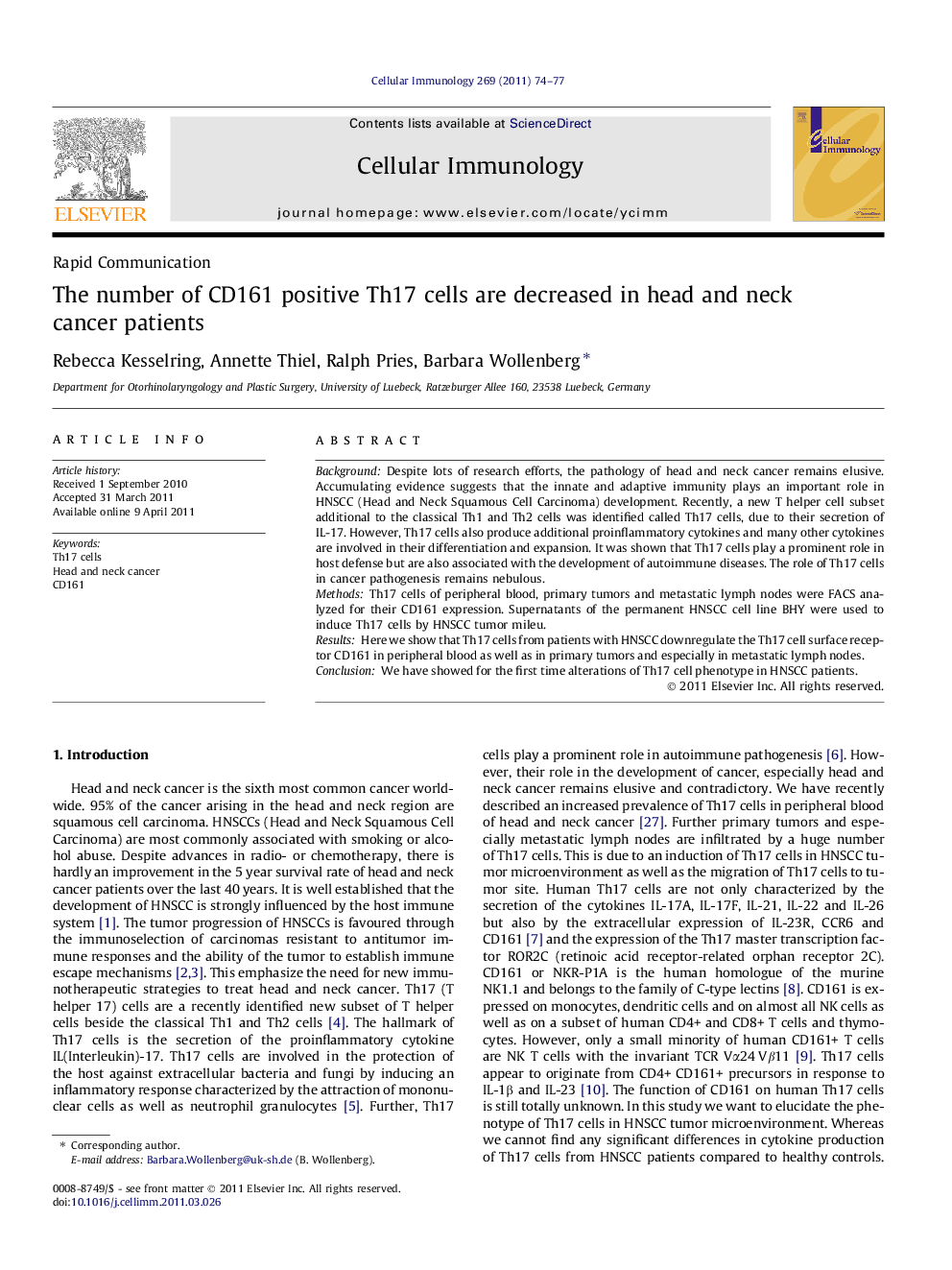| Article ID | Journal | Published Year | Pages | File Type |
|---|---|---|---|---|
| 2167412 | Cellular Immunology | 2011 | 4 Pages |
BackgroundDespite lots of research efforts, the pathology of head and neck cancer remains elusive. Accumulating evidence suggests that the innate and adaptive immunity plays an important role in HNSCC (Head and Neck Squamous Cell Carcinoma) development. Recently, a new T helper cell subset additional to the classical Th1 and Th2 cells was identified called Th17 cells, due to their secretion of IL-17. However, Th17 cells also produce additional proinflammatory cytokines and many other cytokines are involved in their differentiation and expansion. It was shown that Th17 cells play a prominent role in host defense but are also associated with the development of autoimmune diseases. The role of Th17 cells in cancer pathogenesis remains nebulous.MethodsTh17 cells of peripheral blood, primary tumors and metastatic lymph nodes were FACS analyzed for their CD161 expression. Supernatants of the permanent HNSCC cell line BHY were used to induce Th17 cells by HNSCC tumor mileu.ResultsHere we show that Th17 cells from patients with HNSCC downregulate the Th17 cell surface receptor CD161 in peripheral blood as well as in primary tumors and especially in metastatic lymph nodes.ConclusionWe have showed for the first time alterations of Th17 cell phenotype in HNSCC patients.
► Th17 cells from patients with HNSCC downregulate cell surface receptor CD161. ► Cell surface modulation occurs in peripheral blood as well as in primary tumors and especially in metastatic lymph nodes. ► These are the first data showing alterations of Th17 cell phenotype in HNSCC patients.
